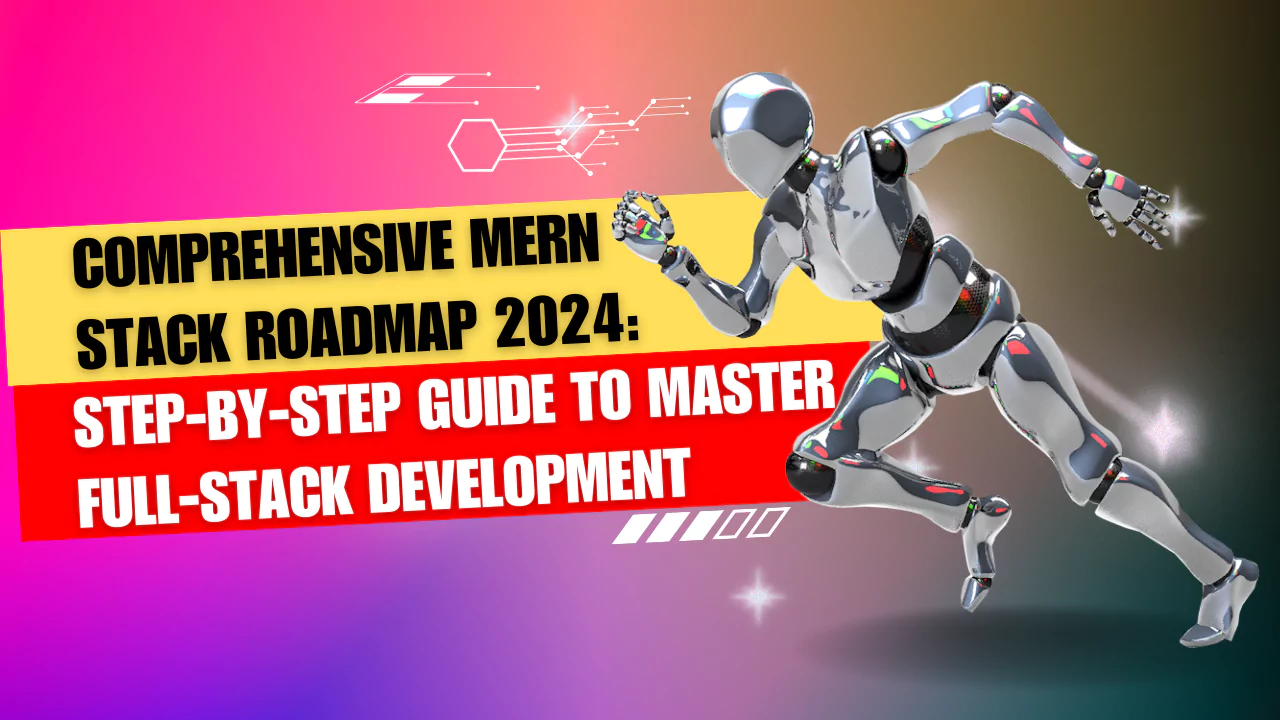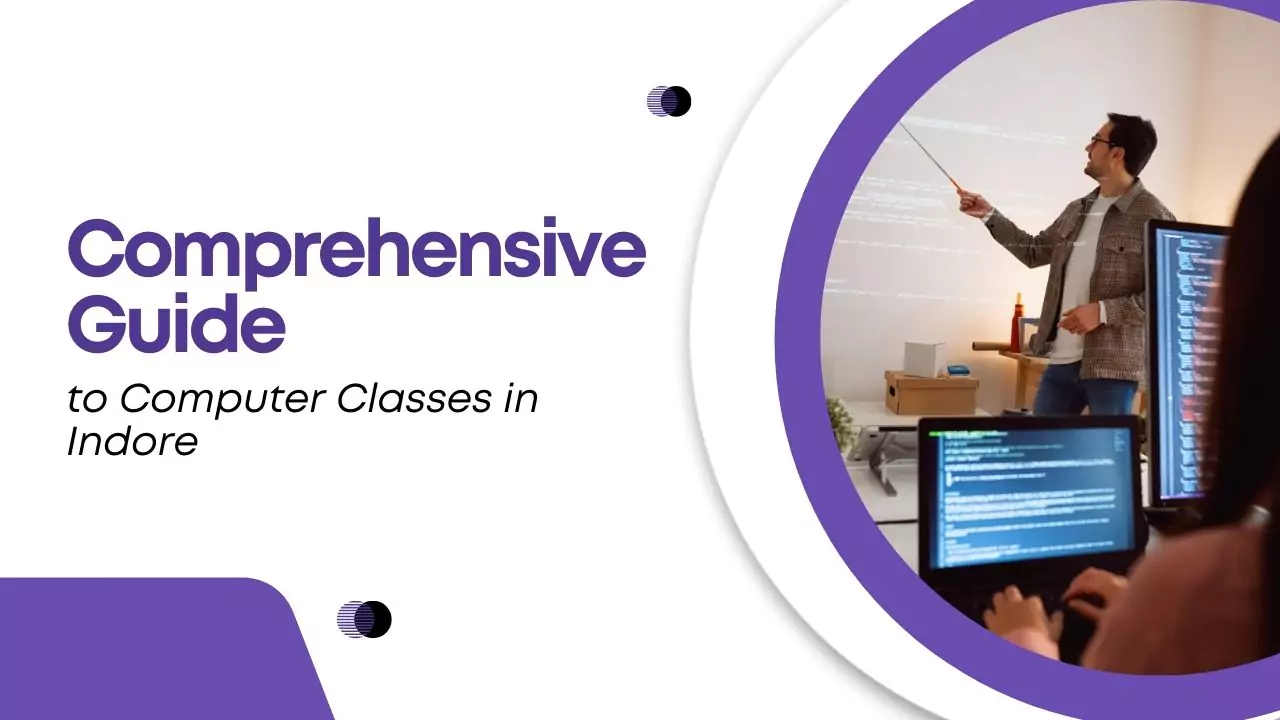In today’s competitive tech landscape, full-stack development is more important than ever, and MERN is the go-to stack for aspiring developers. The combination of MongoDB, Express.js, React.js, and Node.js forms the perfect ecosystem for building dynamic, high-performance web applications. This blog post will guide you through the MERN Stack roadmap for 2024, offering a step-by-step approach to mastering these technologies and becoming a full-stack developer.
What is MERN Stack?
MERN is a full-stack, JavaScript-based technology stack that enables developers to build end-to-end web applications with a single language. Here’s a quick overview of each component:
- MongoDB: A NoSQL database that stores data in JSON-like documents, allowing for flexibility and scalability.
- Express.js: A lightweight web application framework for Node.js that simplifies server-side logic and API creation.
- React.js: A front-end JavaScript library that allows developers to build dynamic, single-page applications with ease.
- Node.js: A JavaScript runtime that enables server-side scripting and is ideal for building scalable, high-performance applications.
Why Follow a MERN Stack Roadmap?
With a structured roadmap, you’ll have a clear learning path, from beginner to advanced concepts. This systematic approach helps you grasp the fundamentals and avoid common pitfalls. Plus, following a roadmap ensures that you stay on track, improving your job readiness and development skills.

Step-by-Step MERN Stack Roadmap
Step 1: Master MongoDB (Database)
Why MongoDB?
MongoDB is ideal for modern applications due to its flexibility in handling unstructured data. As a NoSQL database, it stores data in JSON-like documents, making it the go-to choice for scalable and agile applications.
Key Learning Points:
- Install and configure MongoDB on your local machine or cloud.
- Understand document-based database concepts like collections and documents.
- Learn CRUD operations (Create, Read, Update, Delete) using MongoDB.
- Use Mongoose for data validation and schema modeling.
Resources: MongoDB University, official documentation, and tutorials.
Step 2: Learn Express.js (Backend Framework)
Why Express.js?
Express.js is the de facto framework for building server-side applications with Node.js. It offers routing, middleware, and API management, streamlining the development process.
Key Learning Points:
- Set up an Express server and understand basic routing.
- Implement middleware to handle HTTP requests and responses.
- Learn how to build RESTful APIs with Express.js.
- Integrate Express with MongoDB for data storage.
Resources: Express.js documentation, Codecademy, and interactive courses.
Step 3: Get Proficient in React.js (Frontend)
Why React.js?
React allows you to build fast, dynamic user interfaces through its component-based architecture. It’s the most popular front-end library and has a huge community backing.
Key Learning Points:
- Set up a React project with Create React App.
- Understand the core concepts: components, props, state, and lifecycle methods.
- Learn how to manage application state using Redux or React’s Context API.
- Build reusable, modular components for a clean UI.
Resources: Official React documentation, freeCodeCamp, and Scrimba tutorials.
Step 4: Understand Node.js (Backend)
Why Node.js?
Node.js allows JavaScript to be used for server-side scripting, making it possible to build full-fledged web applications with a single language.
Key Learning Points:
- Understand asynchronous programming and the event-driven model.
- Learn how to handle file systems, buffers, and streams.
- Work with the Node Package Manager (NPM) to install third-party libraries.
- Use Node.js to create scalable server-side applications.
Resources: Node.js documentation, Udemy courses, and beginner tutorials.
Step 5: Full-Stack Integration
Now that you understand the individual components of the MERN stack, it’s time to integrate them into a full-stack application. Here’s how:
- Use React for the frontend to create dynamic user interfaces.
- Set up Express and Node.js to handle backend logic and data requests.
- Store and retrieve data from MongoDB.
- Implement CRUD operations for a complete, functional web application.
Example Project: Build an e-commerce platform where users can browse products, add them to a cart, and check out.

Advanced Concepts to Explore
Authentication and Authorization
Implement secure user login systems using JWT (JSON Web Tokens).GraphQL
Learn how to use GraphQL for optimized data fetching, making your APIs more efficient.Server-Side Rendering (SSR)
Improve your React app’s performance and SEO by using Next.js for server-side rendering.State Management
Dive into more advanced state management using Redux or Context API for larger applications.
Real-World Projects for Your Portfolio
To truly master the MERN stack, apply your knowledge by building real-world projects. Here are some ideas:
- Social Media Platform: Build a full-stack social media app where users can post, like, and comment.
- Blog Platform: Create a personal blog where users can write posts and leave comments.
- Task Manager: Develop a task management tool that allows users to create, edit, and delete tasks.
Showcase these projects on GitHub to build an impressive portfolio and demonstrate your expertise to potential employers.
Tools and Resources for MERN Stack Developers
- freeCodeCamp: Offers interactive courses for full-stack web development.
- MongoDB University: Provides free, in-depth MongoDB courses.
- React Documentation: The best source to learn React concepts from the ground up.

FAQs
How long does it take to learn the MERN stack?
The time varies depending on your prior experience. For beginners, it might take 3-6 months to gain proficiency in all components of the stack.
Is MERN stack still in demand?
Yes! The demand for MERN developers is increasing in 2024 due to the flexibility, scalability, and full JavaScript capabilities of the stack.
What is the MERN stack used for?
The MERN stack is a popular full-stack development technology used to build dynamic, end-to-end web applications. It consists of MongoDB (database), Express.js (backend framework), React.js (frontend framework), and Node.js (server environment). This stack allows developers to use JavaScript across both the frontend and backend, making it an efficient choice for building modern web applications like e-commerce platforms, social networks, and more.
Is MERN stack easy to learn?
Yes, the MERN stack is considered accessible for beginners, especially for those familiar with JavaScript. While learning each component—MongoDB, Express, React, and Node.js—requires dedication, there are numerous online resources, including documentation, courses, and tutorials, that simplify the learning process. Many beginners start with small projects and progressively move on to full-stack applications.
How long does it take to learn the MERN stack?
The time required to learn the MERN stack varies depending on your prior experience with programming. For complete beginners, it may take anywhere from 3 to 6 months of consistent practice to become proficient in the core technologies. Those with a background in JavaScript may learn it more quickly, possibly within 2 to 4 months, especially if they focus on building projects as they learn.
What are the advantages of using the MERN stack?
The MERN stack offers several advantages:
- Single Language: JavaScript is used throughout the entire stack, from the front end to the back end, simplifying development.
- Scalability: MongoDB and Node.js are highly scalable, making them ideal for building large applications.
- React.js: It allows for fast, responsive user interfaces and seamless state management.
- Full-Stack Solutions: The MERN stack enables developers to handle the full spectrum of web development, from database management to server-side logic and front-end development.
Is the MERN stack in demand in 2024?
Yes, the MERN stack remains in high demand in 2024, especially for building scalable web applications. The demand for full-stack developers proficient in JavaScript continues to grow, as companies seek flexible, efficient development stacks for modern web projects. With the rise of cloud computing and the need for responsive web applications, MERN developers are sought after by startups and large corporations alike.
Can I build a full-stack application with the MERN stack?
Absolutely! The MERN stack is designed specifically for building full-stack applications. With MongoDB for database management, Express.js and Node.js handling server-side logic, and React.js powering the front end, developers can build feature-rich, scalable applications. Common projects include e-commerce websites, social media platforms, and task management tools.
Conclusion
The MERN stack is a powerful and in-demand technology for full-stack web development. Following this roadmap will guide you through each step, from mastering individual components to building fully integrated applications. At Futuristic Coding Academy, we provide resources and courses to help you become a proficient MERN stack developer. Start your journey today!






